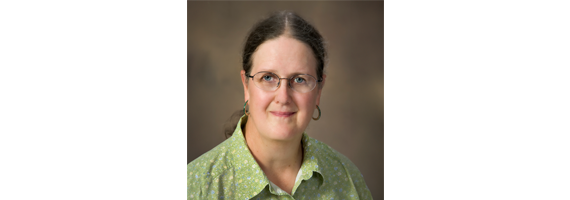
Steward Observatory’s Marcia Rieke Wins Prestigious Gruber Cosmology Prize
The 2024 Gruber Cosmology Prize recognizes Marcia Rieke of the University of Arizona’s Steward Observatory for her pioneering work in infrared astronomy, especially her oversight of instruments allowing astronomers to explore the earliest galaxies in the universe.
Rieke will receive the $500,000 award as well as a gold laureate pin at a ceremony that will take place August 8 at the General Assembly of the International Astronomical Union in Cape Town, South Africa. The citation recognizes her “lasting impact on our understanding of the universe,” in particular through her role as Principal Investigator on a key instrument aboard the James Webb Space Telescope (JWST)—an infrared camera that, in the nearly two years since the telescope began scientific operations, has both reinforced and challenged the understanding of the early universe.
Infrared astronomy investigates the part of the electromagnetic spectrum where the wavelengths of light are slightly to substantially longer than in the visible portion—the sliver of the spectrum that our eyes can see. Observing the universe in infrared light allows astronomers to probe the first stars and galaxies by exploiting a physical phenomenon that cosmologists call “redshift.”
When light left the first galaxies, in the period 100 million to 1 billion years after the Big Bang, it occupied the visible and ultraviolet sections of the electromagnetic spectrum. In the 13.7 to 13 billion years since then, the expansion of the universe—the expansion of space itself—has stretched those light waves, lengthening them, shifting them not just toward the red end of the visible spectrum but into the infrared.
Rieke has devoted much of her career to infrared astronomy, both as an observer and in the capacity for which she is receiving the Gruber Prize—as an instrumentalist on major space missions. Astronomers desiring observations in the infrared observe from space because the infrared sky seen through the Earth’s atmosphere is too bright to see distant galaxies.
She served on the Science Working Group for the Space Infrared Telescope Facility (later the Spitzer Space Telescope, which was operational from 2003 to 2020) and as the co-investigator for its onboard Multi-band Imaging Photometer. She then assumed the role of deputy principal investigator for the Near Infrared Camera and Multi-Object Spectrometer on the Hubble Space Telescope. While that instrument allowed Hubble to see galaxies at significantly higher redshifts (and therefore at significantly earlier epochs in the universe) than any previous instrument, it also capped Hubble’s observing capabilities at around a billion years after the Big Bang. If astronomers wanted to see the universe’s first stars and galaxies, they would need a telescope that could see deeper into the infrared.
For that reason, Hubble’s successor, the James Webb Space Telescope (originally the Next Generation Space Telescope), was always going to be primarily an infrared instrument. From 1997 to 2000 Rieke served on the telescope’s ad hoc working group, helping to formulate its instrumentation and aspirations. She next chaired the telescope’s Interim Science Working Group, from 2000 to 2003. In 2002, when the telescope was entering full design and production mode, NASA appointed Rieke the Principal Investigator for JWST’s Near-Infrared Camera (NIRCam). Over the next twenty years, Rieke oversaw the development, delivery, and, after JWST’s launch in December 2021, commissioning of NIRCam.
She has also availed herself of the telescope for her own research as well as her colleagues’. One of the perks of being a principal investigator on a major JWST instrument is an allotment of Guaranteed Observing Time—in Rieke’s case, 900 hours. She and her collaborators have apportioned that observing time among teams that use another advantage of infrared astronomy—the ability to see through the universe’s plentiful repositories of dust—to study the cosmos from the planets, moons, and loose bodies in our solar system, through the star- and planet-forming regions in the rest of our Milky Way galaxy, and across galaxies stretching to Hubble’s 1 billion-years-after-the-Big-Bang horizon.
As for what lies beyond that horizon, NIRCam has repeatedly produced results redefining cosmology. According to JWST, galaxies in the early universe developed earlier, grew larger, and spawned a richer array of elements than previous theories had predicted. While that mismatch of prediction and observation initially resulted in a flurry of articles and essays proclaiming that “Webb broke cosmology,” Rieke (like the vast majority of cosmologists) sees the process as an example of the scientific method at work.
“There’s a story beginning to emerge,” Rieke says, “but we still need some more pieces to the story.” For the next twenty years or more—the duration of JWST’s lifetime—many of those pieces will emerge from the instrument that Rieke, more than anyone else, willed into existence.

For Public
Public events include our Monday Night Lecture Series, world-reknowned Astronomy Camp and Mt Lemmon Sky Center.

For Students
A good place to start if you want to become an undergrad major or grad student, or need to find our schedule of classes.

For Scientists
Find telescopes and instruments, telescope time applications, staff and mountain contacts, and faculty and staff scientific interests.




